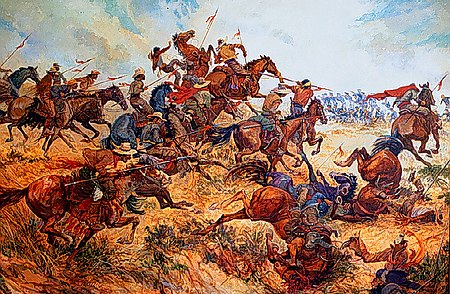Battle of San Pasqual

The Battle of San Pasqual, also spelled San Pascual, was a military encounter that occurred during the Mexican–American War in what is now the San Pasqual Valley community of the city of San Diego, California. The series of military skirmishes ended with both sides claiming victory, and the victor of the battle is still debated. On December 6 and December 7, 1846, General Stephen W. Kearny's US Army of the West, along with a small detachment of the California Battalion led by a Marine Lieutenant, engaged a small contingent of Californios and their Presidial Lancers Los Galgos (The Greyhounds), led by Major Andrés Pico. After U.S. reinforcements arrived, Kearny's troops were able to reach San Diego.
Excerpt from the Wikipedia article Battle of San Pasqual (License: CC BY-SA 3.0, Authors, Images).Battle of San Pasqual
San Pasqual Valley Road, San Diego San Pasqual Valley
Geographical coordinates (GPS) Address Nearby Places Show on map
Geographical coordinates (GPS)
| Latitude | Longitude |
|---|---|
| N 33.086111111111 ° | E -116.99 ° |
Address
San Pasqual Valley Road
San Diego, San Pasqual Valley
California, United States
Open on Google Maps





